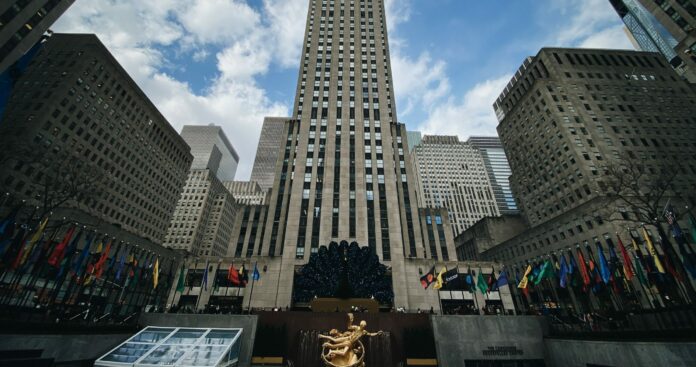Diego Rivera is one of the world’s most renowned muralists, recognized for his large-scale and imaginative murals. The Mexican painter and revolutionary was born in 1886 and passed away in 1957. His life was full of interesting projects, new ideas, and innovations in the world of art.
However, while you can still find remnants of Rivera’s paintings in Mexico, the United States, and other places around the world, not all of his works have had such a fantastic fate. In fact, one of his works—arguably the one he intended to be the greatest work of his life—was destroyed before it could ever be fully enjoyed by the curious public.
The story behind The Man at the Crossroads is one that raises a lot of important questions. What is the role of art in our society? What, if any, influence should a commissioner have over an artist? And when is it time for us to take a stand, even if it means not getting paid or having our work destroyed?
Let’s take a closer look at the unique history behind Rivera’s The Man at Crossroads.
The Story Behind the Man at the Crossroads
In the mid-1900s, the Rockefeller Family (primary holders of Standard Oil) was arguably the most powerful family in the entire world. Their prominence was especially notable in the buildings and architecture of New York City, particularly 30 Rockefeller Plaza (then called the RCA building), an art-deco masterpiece of a skyscraper that still stands today.
The family used their tremendous wealth to commission a variety of public works—even from some of the world’s most controversial and revolutionary artists, such as Diego Rivera. In 1933, Rivera, a self-proclaimed communist, was hired by the Rockefeller family (arguably the most “capitalist” family there was) to create a large, thought-provoking mural that was to be hung in 30 Rock’s main lobby.
Initially, Diego was given a relatively large degree of artistic freedom in order to fill the massive wall. John Rockefeller Jr., who was considered a bit more open-minded than his father—and was also highly influenced by his wife, Abby, who was a fan of Diego’s work, such as Detroit Industry—gave Diego the go-ahead to create a bold mural unlike any others in the area.
Diego proposed a three-panel work. The left panel, called The Frontier of Ethical Evolution, illustrated what Diego viewed as the virtues of a socialist society. The right panel, called, The Frontier of Material Development, illustrated the productivity unleashed by capitalism. The center panel, The Man at the Crossroads, contained an industrial worker who, undoubtedly, was influenced by both sides.
Perhaps surprisingly to some, Rockefeller approved of Rivera’s initial designs. However, after an initial viewing of the mural, the New York World Telegraph—one of the most widely read newspapers at the time—criticized the work of art, calling it “anti-capitalist propaganda.”
Rather than moderating his fresco mural to appease the capitalist class (which he despised), Rivera doubled down on the socialist aspects of the paintings, adding images of the former Soviet Union leader Vladimir Lenin as well as a group of communist workers celebrating May Day (a holiday with socialist origins).
When Rockefeller saw the new mural with these unambiguous additions, he was outraged. He commented that, though he respects Diego’s artistic vision, he couldn’t have a portrait of Vladimir Lenin hanging in his lobby. He commanded that Diego remove any references to Lenin and return the mural back to its original form.
Rockefeller, knowing that he was paying a considerable amount of money for the commission, assumed that Rivera would comply. However, Rivera grew even more resentful of the constraints on his artistic vision and refused. In Rivera’s view, the purpose of art is for the artist to express what they see and what they feel—not what they are told to see and feel.
After Rivera refused to alter his work, Rockefeller ordered for the entire mural to be destroyed. Only a few black and white photographs remain as evidence of one of the most interesting feuds in art history.
Diego Rivera’s Legacy Lives On
In 1934, Rivera created a smaller version of the moral, which he renamed Man Controller of the Universe, which can currently be viewed in the Palacio de Bellas Artes, the most prestigious Art Museum in Mexico City.
The classic feud between Rockefeller and Rivera has also been recreated many times in pop culture settings, including a poem by EB White (1933) “I paint what I see: a ballad of artistic integrity”, as well as the cinematic masterpieces Cradle Will Rock (1999) and Frida (2002)—the latter film focuses on Diego’s long-time partner and eventual wife, the revolutionary Mexican artist Frida Kahlo.
Perhaps what makes Diego’s work most memorable is the fact that it was never actually seen—instead, what lives on at 30 Rockefeller Plaza is the legacy of a man who was willing to stand by his artistic principles, no matter the cost.
Andrew is a freelance writer that primarily focuses on real estate and finance topics. He graduated from the University of Colorado with degrees in Finance and Political Science and has since worked in the real estate, life insurance, and digital marketing industries. When he is not writing, Andrew enjoys skiing, playing piano, painting, and spending time with his wife (Maggie) and cat (Crow).



